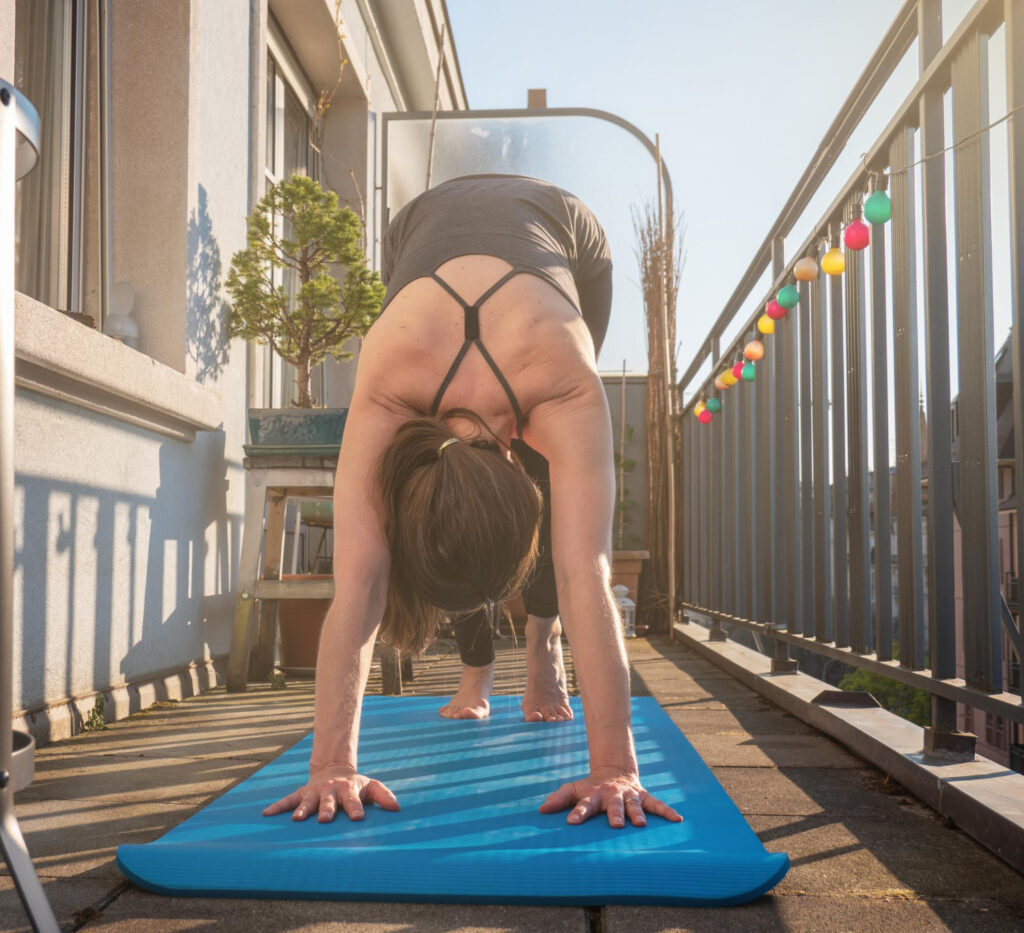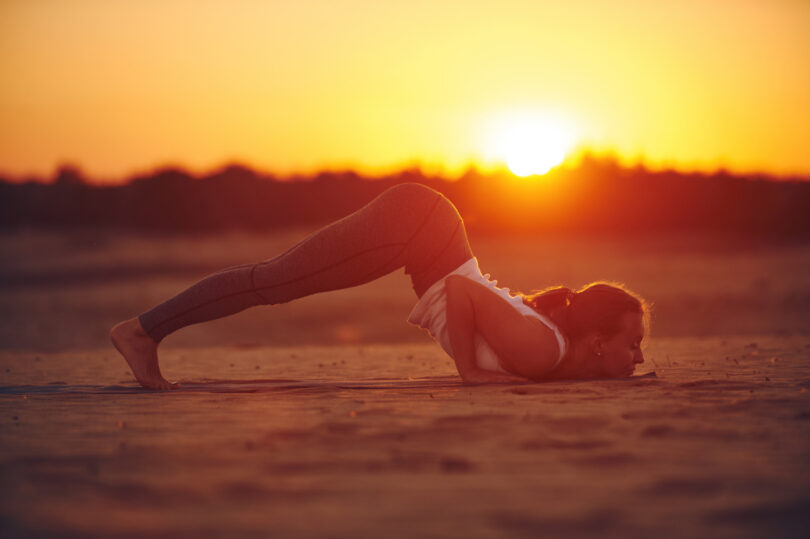Table of Contents
Introduction to Hot Yoga
Hot yoga is more than just a fitness trend; it’s a vibrant, challenging, and rewarding practice that has captivated millions worldwide. In this comprehensive guide, we will explore the various facets of hot yoga, from its origins to its health benefits, and provide practical advice for those looking to dive into this heated form of yoga.
What is Hot Yoga?
Hot yoga refers to exercises performed under hot and humid conditions, leading to considerable sweating. It originated in the 1970s with Bikram Choudhury and has evolved into various styles that utilize heat to increase flexibility and detoxification.
The Benefits of Hot Yoga
Yoga in a heated room amplifies its health benefits, including enhanced flexibility, improved cardiovascular health, and increased strength. Additionally, the heat promotes a deeper mental focus and a purified mind, as practitioners must concentrate intensely to maintain poses in challenging conditions.
Essential Gear for Hot Yoga
To practice hot yoga safely and effectively, you need the right gear. This includes breathable, moisture-wicking clothing, a high-quality, non-slip yoga mat, and optional accessories like yoga towels and water bottles for high temperatures.

Hot Yoga Styles
Hot yoga is any yoga practice in a heated room, typically between 95 to 105 degrees Fahrenheit (35 to 40 degrees Celsius). The heat is believed to help deepen stretches, increase flexibility, and encourage a more intense workout. Here are some popular styles of hot yoga:
- Bikram Yoga: Bikram Choudhury developed one of the most well-known forms of hot yoga. It consists of 26 postures and two breathing exercises performed in a specific order in a room heated to about 105 degrees Fahrenheit with 40% humidity. Each class lasts 90 minutes.
- Moksha Yoga (Modo Yoga) is a Canadian form of hot yoga similar to Bikram. It includes a series of 40 different poses and is performed in a slightly cooler room. The focus is on sustainability, and studios are often eco-friendly.
- CorePower Yoga: This is a fitness-based yoga practice that combines hot yoga elements with power yoga. Classes vary in temperature but are typically held in a room heated to around 95 degrees Fahrenheit.
- Hot Vinyasa Yoga: This style involves a flowing sequence of poses (vinyasa) performed in a heated room. Unlike Bikram or Moksha, Hot Vinyasa classes can vary greatly in terms of poses and sequence, depending on the instructor.
- Forrest Yoga: Developed by Ana T. Forrest, this practice addresses modern-day stress and physical ailments. It’s usually practiced in a room heated to about 85 degrees Fahrenheit, slightly cooler than traditional hot yoga temperatures.
Each style has a unique approach but shares the common element of heat, which enhances the yoga practice.
Related Article: Yoga Model: The Art and Journey of Body Positivity and Flexibility
Preparing for a Hot Yoga Class
Proper preparation can differentiate between a beneficial session and a potentially overwhelming experience.
Hydration
You are hydrating before, during, and after hot yoga is crucial due to the intense sweating. Drink plenty of water throughout the day before class to ensure you are adequately hydrated.
Eating Habits
Eating light meals a few hours before class can help maintain energy without discomfort. Avoid heavy, greasy foods and choose fruits, vegetables, and lean proteins.
Common Challenges in Hot Yoga
Hot yoga can offer a range of benefits, including increased flexibility and detoxification. Still, it also comes with challenges, especially for beginners or those unfamiliar with exercising in heated environments. Here are some common challenges faced in hot yoga:
- Heat Intolerance: One of the primary challenges of hot yoga is the high temperature of the room, which can be overwhelming for many. This can lead to dizziness, nausea, and headaches, especially if not adequately hydrated.
- Dehydration: The intense heat increases sweat production, which can quickly lead to dehydration if one isn’t drinking enough fluids before, during, and after the session. Dehydration can further exacerbate feelings of dizziness and fatigue.
- Overexertion: The warm environment can make muscles more pliable, allowing deeper stretches and poses. This can lead to overstretching or straining muscles that are not yet ready to handle such intense activity, increasing the risk of injury.
- Difficulty Breathing: The hot and often humid air can make breathing hard, particularly for those with respiratory issues or those not accustomed to such conditions. This can lead to shortness of breath and reduced stamina.
- Sweat Management: Excessive sweating can cause slips on the yoga mat, increasing the risk of slips and falls. It also requires practitioners to frequently wipe away sweat, which can distract and disrupt the practice flow.
- Adapting to the Routine: Hot yoga classes often follow a specific sequence of poses that can be challenging to keep up with, especially for beginners. The heat can exacerbate the difficulty, draining energy more quickly than regular yoga.
- Electrolyte Imbalance: Heavy sweating depletes water, salts, and minerals in the body, leading to an electrolyte imbalance. This can cause cramping and other muscular issues during or after the session.
Despite these challenges, many find hot yoga rewarding and continue to practice, gradually adapting to the heat and intensity of the workouts. Proper hydration, listening to one’s body, and easing progressively into practice can help mitigate these issues.
Hot Yoga Safety Tips
Stay aware of your body’s signals and avoid overexertion. Consult your doctor before starting any new exercise regimen, especially if you have health concerns.
Conclusion
Hot yoga offers a unique blend of physical and mental health benefits. Whether you want to improve flexibility, reduce stress, or simply challenge yourself, hot yoga can be rewarding.
Related Article: How Yoga Can Shape Your Body







